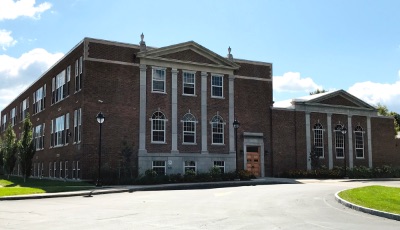6th Graders Discover Jordan’s Erie Canal Past on Walking Tour with Village Historian
A couple of weeks ago, Jordan-Elbridge Middle School 6th graders experienced history firsthand during a walking tour of the Village of Jordan, led by longtime Village Historian Elaine Peters. As part of their study of local and state history, students explored the legacy of the Erie Canal and Jordan’s vital role in New York’s 19th-century transportation and trade network.Elaine Peters guided students along the former canal path, pointing out where the original 4-foot-deep canal once flowed. She showed them the historic locations of dry docks—where barges and boats were once repaired—and explained how towns like Jordan grew thanks to the steady movement of goods like lumber, coal, and hay.
One of the artifacts Peters shared was a piece of pottery unearthed right in Jordan. What made it special, she explained, was that the clay used to create it came from Long Island. “This piece of pottery tells a bigger story,” Peters told students. “It demonstrates how materials and goods moved across the state using the Erie Canal as a highway.”
Students also learned about the blacksmiths who supported the canal economy by forging iron nails and making shoes for the horses, mules, and oxen that hauled canal boats. Peters explained how aqueducts channeled water into the canal, allowing for consistent travel between communities like Jordan, Syracuse, and beyond.
The tour also included stories about Jordan’s historic buildings, including the old Clinton Hotel—now home to Towpath Pizzeria—and the village’s role in national events. One particularly moving story was about President Abraham Lincoln’s Memorial Train, which passed through Jordan after his assassination in 1865.
But the most curious tale may have been that of the cannonball tree. Peters shared the local legend of a cannonball embedded in a tree in Jordan. “Many believed it had been shot into the tree,” she said, “but it’s more likely someone placed it in the crook, and over time, the tree grew around it.” Though the tree no longer stands today, the cannonball can be seen at the Jordan Village Museum, located inside the Jordan Library.
Sixth grader Collin Campion summed up the experience best: “I didn’t realize how much history was around us every day. It’s crazy to think that President Lincoln’s train came through here or that pottery from Long Island ended up in the ground in Jordan. Seeing all this made the past feel real.”
Thanks to Elaine Peters and her dedication to preserving local history, students left the tour with a stronger connection to their community and a deeper appreciation for the stories that surround them.




